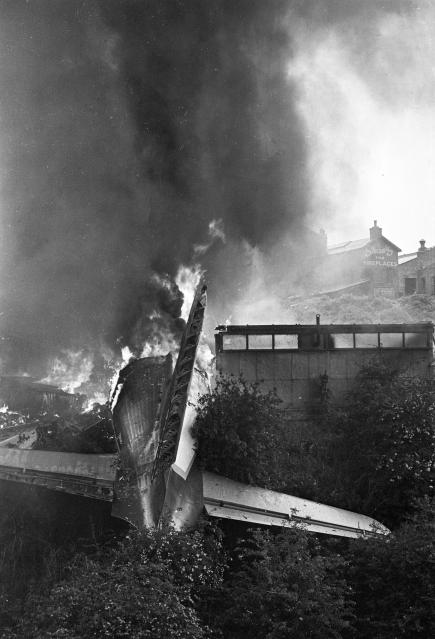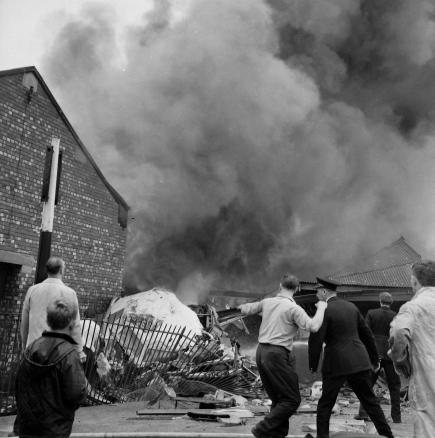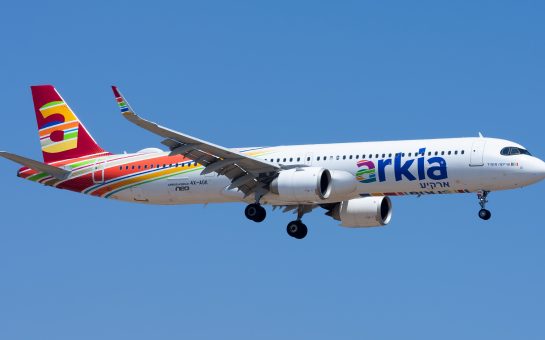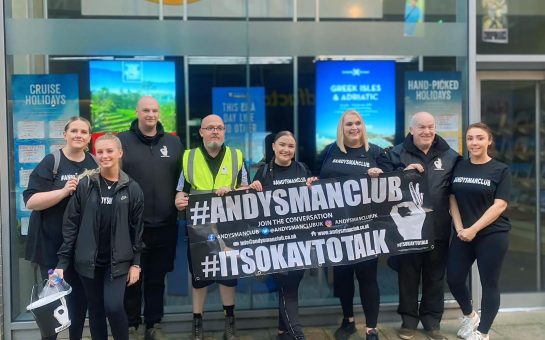In 1967, Vivienne Thornber decided to take a trip with her best friend, Susan Howarth, to Majorca to celebrate her 20th birthday.
They were returning to Manchester Airport on Sunday June 4 from the Spanish holiday island – along with 77 other passengers – when tragedy struck.
The British Midland Airways flight she was travelling on crashed in an open area close to the town centre of Stockport killing all but 12 of the 84 people on board.
Vivienne, now 69, recalled her experience to MM 49 years to the day since the tragedy.
“I was on a 10-day beach holiday with my friend for my birthday,” she said.
“The flight was unremarkable up until my friend said to me that we’d already passed over Manchester Airport once and I said to her ‘oh I didn’t realise that’.
“Nobody thought anything was wrong because we were supposed to land in Manchester at about 10am and it was around about that time.
“I remember thinking that we were very low though and I couldn’t see the airport anywhere.
“We were so close to the red brick buildings but there was no panic on board because we weren’t informed of anything wrong.”

TRAGEDY STRIKES: 72 people lost their lives when the British Midland Airways flight from Majorca to Manchester crashed in Stockport on June 4, 1967
The crew had attempted an initial landing which had to be aborted – which isn’t unusual – and needed to re-position for another attempt.
The fuel tanks of the Canadair C-4 Argonaut had been slowly leaking into the pipes to the engine though and the crew was faced with frantic confusion when two of the four engines suddenly cut out.
The pilot, Harry Marlow, tried in vain to control the plane but he could not prevent its rapid descent.
It was at this point that the captain – though he has no recollection of the incident – is believed to have made a decision to crash land in Hopes Carr, near the centre of the town.
Vivienne – who was sat near the front of the plane – said: “I screamed ‘Oh my god’ to my friend and grabbed hold of her hand and the next thing I remember I was waking up and seeing flames coming from the cockpit.
“We were right at the front of the plane and the flames were coming towards us so I thought if I don’t do something I’m going to get burnt.
“The only thing I could do was scream.
“That’s when PC Bill Oliver heard the noise and came to us.”
PC Oliver was one of the first on the scene of the crash and his actions helped save the lives of Vivienne, Susan and many others.
As the plane was about to crash, its right wing hit the gable end of a building which tore the wing and the front part of the fuselage off.
This meant the right-hand-side – where Vivienne and Susan were sat – was more easily accessible to rescuers but unfortunately, within 10 minutes of the crash, the fire had consumed the entire aircraft.
Remarkably, no one on the ground was killed but around 35 passengers who had survived the initial crash were killed by the fire.
In total, 10 passengers and two members of the crew survived.
Because the plane had so little forward momentum, it nose dived into the ground meaning the seating collapsed together like a concertina.
This caused serious leg injuries to all those on board – including Vivienne.
She said: “They thought at first that they’d have to amputate one of my legs at Stockport Infirmary, where we were taken initially.
“I’d also fractured both my ankle, wrist and several teeth and I’d nearly bitten right into my tongue.
“In the end, I had to have a steel plate and a bone graft on my leg and fortunately it has worked and I’m quite mobile now.
“I’m actually going back to Majorca next week for a holiday which will be the 14th time that I’ve returned.
“Susan and I went back two years after the accident because if I hadn’t have gone then I would never have flown again.”

“THEY HAD TO JUST STAND BACK AND WATCH THEM DIE”: Historian Steve Morrin recalls how remarkably no one on the ground died in the crash but that those in the aircraft quickly became trapped by the flames
A new book is being penned on the tragedy and a documentary is also being filmed in preparation for the 50th anniversary next year.
Steve Morrin originally wrote the 150-page book, The Day the Sky Fell Down, published in 1998, but has taken on the task of compiling a more comprehensive title Six Miles from Home.
It will include the stories of all survivors and rescuers and the tragic tales of those less fortunate.
Morrin told MM: “Many of the stories are incredible.
“One of the police officers told me that they were banging on the windows and the passengers still in the plane were exchanging beats on the inside.
“They tried to break in but obviously it was impossible to get through the shell of an aircraft like that.
“They had to just stand back and watch them die from the fire which was the most tragic part of the whole thing.
“It would have been a much more survivable accident if the fuel fire hadn’t started.”
On top of this, just 12 hours earlier, a flight travelling from Kent to Perpignan in the south of France crashed into the Pyrenees mountain range killing all 88 on board.
At the time, the two accidents made up the worst weekend in British civil aviation history.
Considering the number of casualties in the Stockport crash, 72, strangely, it is one of the least remembered.
“People remember the Tenerife disaster, the Paris air disaster – those sorts of things do stick in the mind,” said Morrin.
“But these particular crashes – I don’t know why – they just seem to have disappeared into the midst of time.”
Morrin added he hoped rescuers, victims and survivors would finally get a fitting tribute and people will know and remember the event in its tragic entirety.
“I think with it being the 50th anniversary next year, there will be a big event coupled with the book and the documentary and that will provide everyone the chance to draw a line under the tragedy.”
Images courtesy of Steve Morrin, with thanks.



